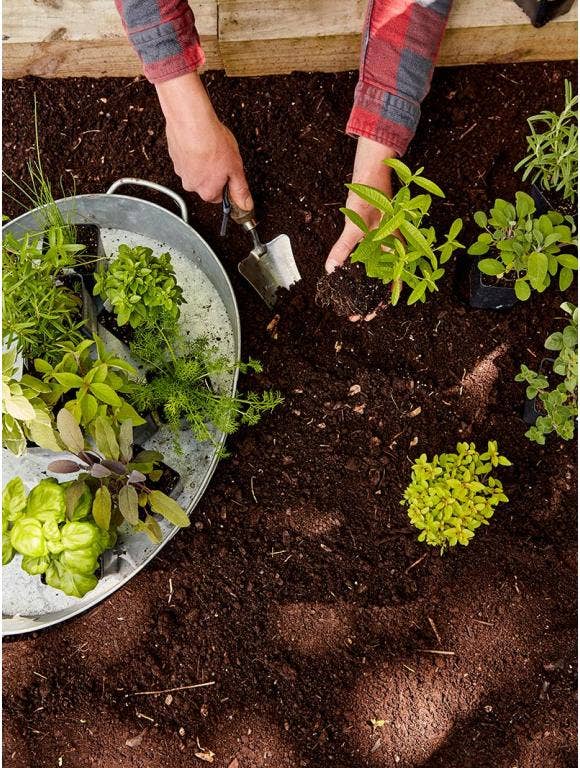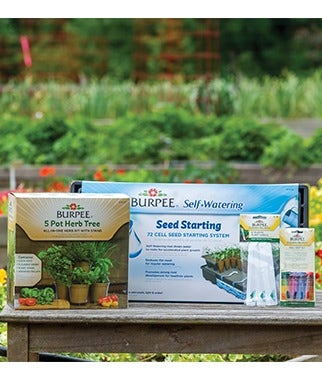
Know Your Sun and Soil
The key to successful and problem-free gardening is choosing plants best suited to the conditions in your garden. Plan your home garden to match the most important features of your property - sun and soil. Plants depend on light as the source of energy to grow, flower and fruit. The amount of sunlight a garden bed receives determines what we can plant. Managing your soil is crucial to successful gardening. Check soil fertility, pH and moisture levels to guide you on how to prepare and maintain garden beds.
Sun Requirement
Plants are adapted to different sun exposures for optimum growth, flowering and fruiting. Siting vegetables, flowers, perennials and herbs in your home garden requires careful observation of sunlight received through the day and through the four seasons. Soil, water, temperature and light interact providing different microclimates in your garden. Plants are labeled into three groups based on their light requirements.
Soil Testing
Know your soil before deciding where and what to plant. Explore around your yard and choose the site where soil texture and drainage look best for gardening. Dig soil samples for testing, at the depth where plants are to be set. The most critical indicators to check are pH and fertility.
pH is a measure of acidity or alkalinity, which determines what nutrients in the soil are available to plants. Nutrients could be available, unavailable or in almost toxic overabundance, depending on the soil pH. The pH scale ranges from 0 to 14, with 7 being neutral. A pH value below 7 means the soil is acidic, while above 7 alkaline. Each unit change in the pH scale is a 10-fold difference in acidity or alkalinity. For example, soil with a pH of 6 is ten times more alkaline than soil with a pH of 5. Alkaline soils have reduced nutrient availability. Most plants grow well in slightly acidic to almost neutral soils, with a pH between 6 and 7.5. Some plants, like blueberries, are adapted to acidic soils. Changing soil pH takes time, and maintaining the preferred pH for your garden means monitoring soil pH whenever new garden beds are prepared. You can adjust the pH level, or select plants that will thrive at the natural pH of your garden soil. Consider your garden soil type (sandy, loam or clay) when making amendments.
Fertility is the ability of the soil to supply essential nutrients in available form for plants to grow, flower, fruit and maintain good health. Carbon, Oxygen, and Hydrogen are derived from water and carbon dioxide from air. The three major elements, for which soil is amended, found in commercial fertilizers, are Nitrogen (N), Phosphorous (P) and Potassium (K). Calcium (Ca), Magnesium (Mg), Sulfur (S), Iron (Fe), Manganese (Mn), Zinc (Zn), Copper (Cu), Boron (Bo) and Molybdenum (Mo) are needed trace elements. Soil pH affects the balance and availability of nutrients and beneficial organisms. Plants are adapted to different levels of soil fertility, and show healthy to abnormal growth, based on their growing conditions.
Burpee's Electronic Soil Tester
The quickest and easiest way to get a reading on the pH and fertility of your soil is to use Burpee's Electronic Soil Tester. Burpee's Soil Tester gives accurate results of the soil pH and fertility without any reagent and requires no batteries. The tester utilizes the chemical reaction known as oxidation-reduction to measure pH within the range of 1 through 9. The fertility portion of the tester measures soil nitrogen, phosphorous and potassium content, in combination. Fertility levels are indicated as Too Little, Ideal and Too Much.
To test your soil with Burpee's Electronic Soil tester, follow these easy instructions:
- Remove the top 2" of the soil surface. Break up and crumble the soil underneath to a depth of 6". Remove any stones or organic debris such as leaves and twigs because they can affect the final result.
- Thoroughly wet the soil with water (ideally rain or distilled water) to a mud consistency.
- Slide selector switch to the right which is the position of pH to measure the acidity and alkalinity of the soil. Slide selector switch to the left which is the position of fertility to measure soil fertility.
- Clean probes thoroughly and insert them into soil up to the specified base. Wait one to two minutes and take reading.
Once you take your reading, check the chart below for tips on how to improve your garden. You can adjust your soil pH to match the requirements of plants in your garden using materials available at your local garden center. Follow the manufacturer's instructions to achieve the best results.
Raise pH to make your soil more alkaline
It is harder and takes longer to correct extremely acid soils. Bone meal can help raise the soil pH. Different soil types react differently to lime added to raise soil pH. More lime is needed for clay and peaty soils than for sandy soils. Use lime only if soil tests indicate it is needed. Lime in the fall to early spring, before planting your garden, to give time for the liming to work.
To increase your pH by 1 to make your soil more alkaline:
Use 4 pounds of hydrated lime per 100 square feet in sandy soils, 6 pounds in loamy soils and 8 pounds in clay soils.
Lower pH to make your soil more acid
If your soil is too alkaline, a quick alternative to using your existing garden beds is to build a raised bed prepared with purchased top soil. Easily available materials like composted leaves, leaf mold and peat moss can be used to lower soil pH. Most fertilizers for "acid-loving" plants such as blueberries and azaleas contain ammonium sulfate or sulfur-coated urea, good and easy choices for acidifying soils.
To decrease your pH by 1 to make your soil more acidic: Use 1.5 pounds of Iron Sulfate per 100 square feet in sandy soils, 3 pounds in loamy soils and 4 pounds in clay soils.



